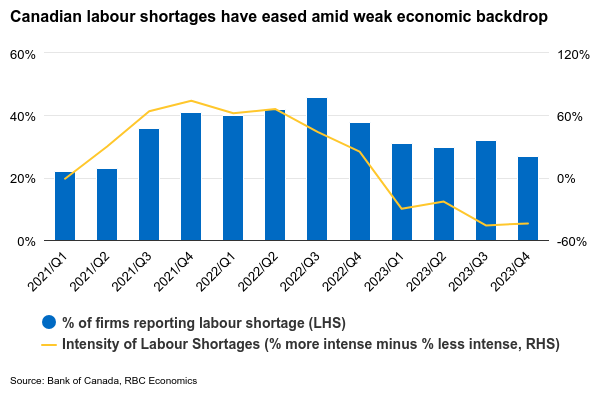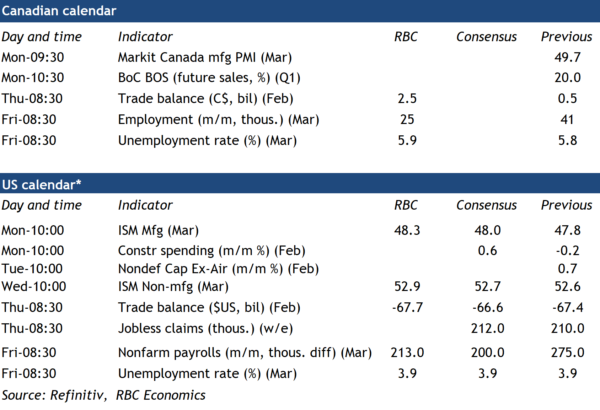Next Friday’s employment data is expected to show job growth remained in positive territory (+25,000 from February), but again it will not be enough to keep up with surging growth in labour supply. Therefore, we forecast another tick higher in the unemployment rate to 5.9% from 5.8%—further above the 5% in January 2023.
So far, a large share of the unemployment rate increase has come from longer job search times for new job seekers (largely new graduates) rather than layoffs. But hiring demand has continued to slow—job openings are tracking 25% below year-ago levels. A spike higher in business insolvencies in early 2024 is also a reminder that there are still downside risks to the economic growth outlook. Wage growth, as measured by the monthly labour force survey, has remained resilient, but ticked down to 5% year-over-year in February. Other measures of wage growth have been lower. Average hourly earnings measured from separate surveys of business payrolls have been running about 2 percentage points below those levels by our count.
The Bank of Canada will be watching the March employment numbers, along with their own business and consumer surveys for further signs on how much the economic backdrop is deteriorating.
The focus for BoC’s Q1 Businesses Outlook Survey on Monday will again be centered on corporate price-setting behaviours and businesses’ wage and inflation expectations. In previous surveys, Canadian businesses have been reporting further “normalizing” in their pricing practices with smaller and less frequent price increases planned for the coming year. That trend should continue as input cost pressures keep easing broadly, and the consumer demand backdrop continues to deteriorate. Other key themes we expect from the survey include slower expectations for wage growth and inflation over the next year—in line with our and the BoC’s outlook for price pressures to keep receding. Depending on that outlook, we expect the BoC to start moving the overnight rate lower in June.
Week ahead data watch
Next Friday’s U.S. employment data is expected to show persistent strength in the labour market. Payroll employment is likely to post another large gain in March, following an average rate of 265,000 increase over the previous three months. The unemployment rate is expected to hold steady at 3.9% after having risen from 3.7% in January.
















